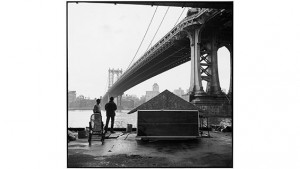Reading Summary 2 (NERSESSOVA, IRINA. “Tapestry Of Space: Domestic Architecture And Underground Communities In Margaret Morton’s Photography Of A Forgotten New York)
This article talks about the use of photography to unveil the forgotten New York. Looking at New York you would describe it as one of the U.S busiest cities. Look closer you see the many different people living there the art all around the neighborhoods. This is how far people look when describing New York. Why not look deeper into New York? You will see the crime and poverty running through the streets. The homeless population is often overlooked even though it has been an issue for quite some time. There are so many buildings for living yet still an overwhelming amount of homeless people, who contribute their own structures to the cities by building a shelter using personal belongings and materials found on the streets.
This article is not to attach New York on its system of dealing with the homeless population, or the lack thereof, but to make a spectacle out of what has been hidden in plain sight. Homes, not homeless, treats homelessness as something you can’t become. Homes are superior to the homeless, but why does the homeless care. The pictures used show that the homeless, not homes, are one in the same. Although, not the socially accepted, the homes built by the homeless are the same as the houses built and lived in by the homes. Life, even though not socially recognized, for the homeless are similar in ways that some have pets. How do you have a dog and be homeless? Same reason why others own dogs: companionship, protection, physical needs…etc.
Morton’s tunnel photographs show not just where the homeless live, but those out to destroy them. Homelessness can’t be defined as a condition of not having a home; because the homeless have homes. Government demolishes these homes because of their lack of valid material and visual appeal. This shows you how unstable a home can be. Making homes and the homeless the same, but what loss is loss from a home losing their home and the homeless losing their home? The feeling of loss is universal but more recognized in the homeless population. Morton’s view on shelter and the lack of shelter on ones physiological state is shown through interviews and even through some of her photographs. Many people in the tunnel stay, while others try their luck outside of them.
Morton interviews a homeless man named Doug. His description of the east river describes a different,yet closer look at what is seen just by a glance. He says “You may drive by here and see that they are shabby, but I think that if you look again you see this person took the time to build a place that could be comfortable for himself…The person who will take the time to build for himself is the person who still has an interest in himself.“(NERSESSOVA, IRINA) Goals of the situationalist internationalists are to blur the lines between art and life, but I believe Morton’s view is that there is no line. Life is like a work of art. Look beyond what’s hidden behind rusted material to see how we can tell the homes from the homeless.
Sources
NERSESSOVA, IRINA. “Tapestry Of Space: Domestic Architecture And Underground Communities In Margaret Morton’s Photography Of A Forgotten New York.” Disclosure 23 (2014): 26. Advanced Placement Source. Web. 20 Nov. 2015.
